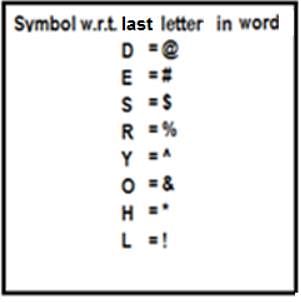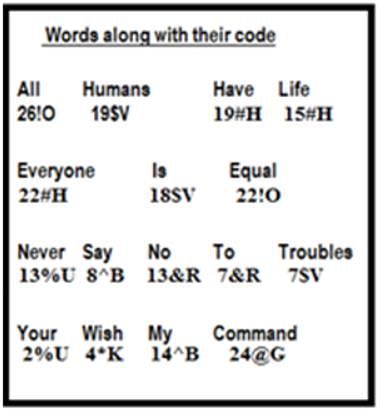Test Level 2: Coding Decoding - CAT MCQ
20 Questions MCQ Test - Test Level 2: Coding Decoding
How will 'Incredible' be coded as according to this code language?
How will 'Colour' be coded as according to this code language?
| 1 Crore+ students have signed up on EduRev. Have you? Download the App |
How will 'Colour' be coded as according to this code language?
How will 'Danger' be coded as according to this code language?
Directions: This question is based on five words given below.
AWAY TAKE GRAT PISS DEAL
(Note: The word formed after performing the given operations may or may not be a meaningful English word)
If the given words are arranged in the order as they would appear in the English dictionary from left to right, then which of the following will be the second from the right?
Directions: This question is based on five words given below.
SIR DEV GOT MIC SAT
(Note: The word formed after performing the given operations may or may not be a meaningful English word)
If the third alphabet in each of the words is exchanged with the first alphabet within the word and middle letter of all the words is changed to the next letter in the English alphabetical series, then how many words thus formed will not have a consonant at both third and second places?
What will be the code for 'shaker prospectus trick'?
What will be the code for 'linguist paraglide emperor'?
Find the resultant of the second row, if N is the resultant of the first row.

Find the resultant of the first row if N is the resultant of the second row.

N is the resultant of the first row. Find the difference if N is subtracted from the resultant of second row.

Using the given rules, find the code for 'student perfect'.
What will be the code for 'am' in this code language?
In a certain code, `MTUXTRVN` is written as `NUVXTQUM`. How is `ASUMNJKL` written in that code?
In a certain code language, STRING is written as %= *- $and PRAISE as ?*@-%. How will GRAPES be written in that code language?
Which of the following words is represented by T%6?
























